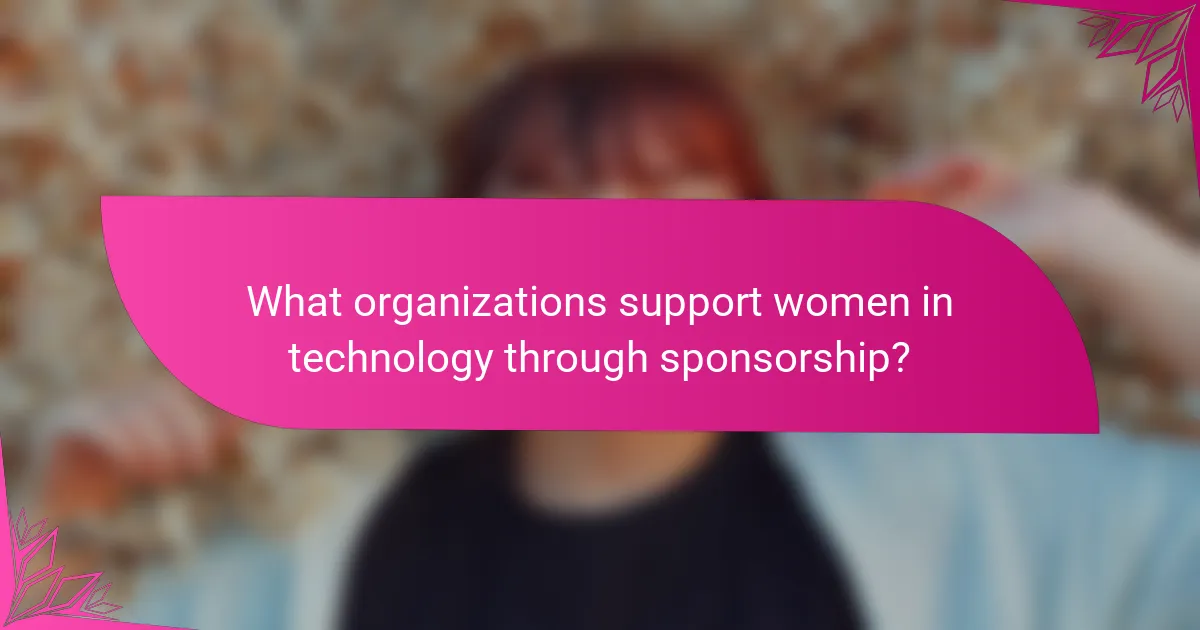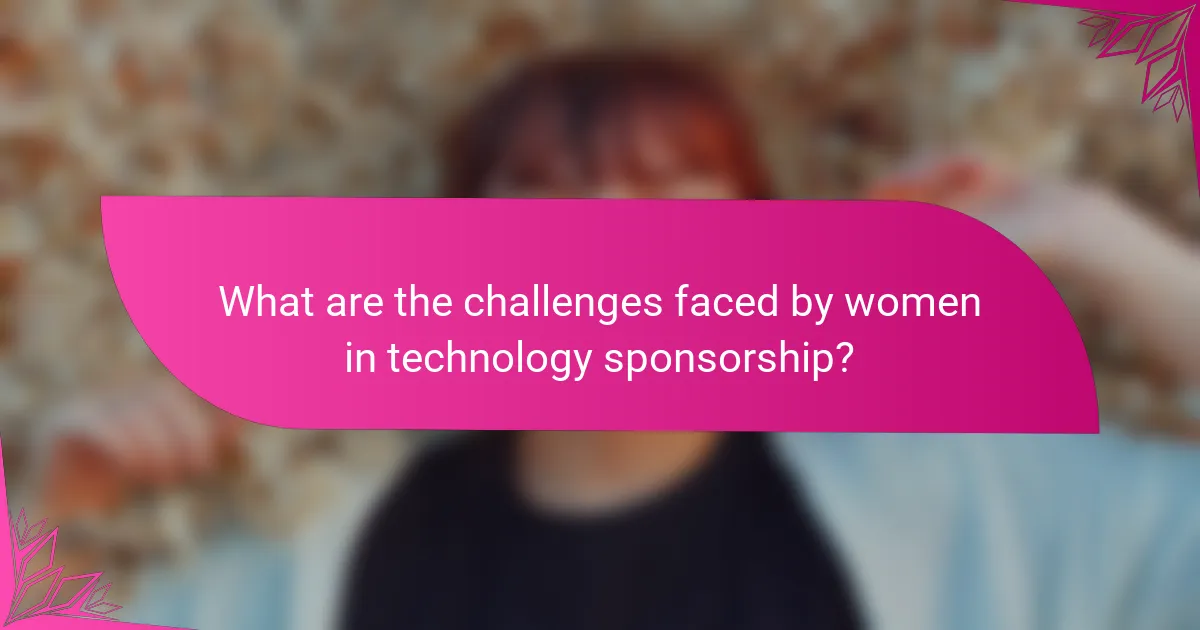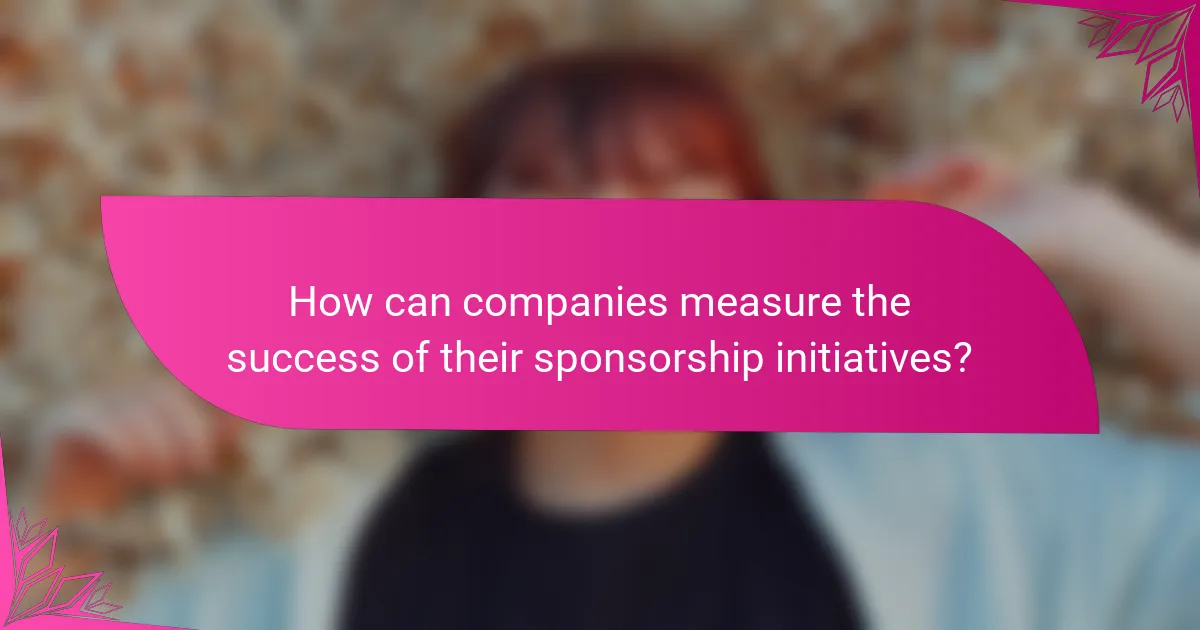Sponsorship is vital for advancing women in technology careers, as it offers critical support and access to opportunities that can significantly impact their professional growth. Unlike traditional mentorship, sponsorship actively champions individuals, helping them secure influential roles and projects. By implementing effective sponsorship strategies, organizations can enhance women’s visibility and foster essential connections that lead to career advancement.

How does sponsorship impact women in technology careers?
Sponsorship plays a crucial role in advancing women in technology careers by providing essential support, visibility, and access to opportunities that may otherwise be out of reach. Unlike mentorship, which offers guidance, sponsorship actively promotes individuals, helping them secure key positions and projects.
Increased visibility and opportunities
Sponsorship increases the visibility of women in technology by connecting them with influential leaders and decision-makers. This visibility often leads to new opportunities, such as high-profile projects or roles that can significantly enhance a career trajectory.
For example, a sponsored woman may be invited to participate in strategic meetings or industry conferences, allowing her to showcase her skills and expertise. This exposure can lead to recognition and further opportunities within the organization or industry.
Access to mentorship and networks
Sponsors can facilitate access to valuable mentorship and professional networks that are critical for career growth. A sponsor often introduces their protégé to key contacts, helping them build relationships that can lead to collaborations or job offers.
Moreover, these networks often include other women in technology, providing a supportive community that can share experiences and advice. This connection can be particularly beneficial in male-dominated fields, where women may face unique challenges.
Enhanced career advancement
With the backing of a sponsor, women in technology are more likely to receive promotions and leadership roles. Sponsors advocate for their protégés during performance reviews and project selections, ensuring they are considered for advancement opportunities.
Research indicates that sponsored individuals often experience faster career progression compared to their non-sponsored peers. This can translate into higher salaries and greater job satisfaction, making sponsorship a vital component of career development in technology fields.

What are effective sponsorship strategies for women in technology?
Effective sponsorship strategies for women in technology include structured corporate programs, targeted mentorship pairings, and engaging networking events. These approaches help to elevate women’s visibility, provide essential support, and foster connections that can lead to career advancement.
Corporate sponsorship programs
Corporate sponsorship programs are designed to actively promote women in technology through organizational support and resources. These programs often include initiatives like leadership training, funding for professional development, and opportunities for high-visibility projects.
Companies can implement these programs by establishing clear goals, identifying potential sponsors within the organization, and creating pathways for women to engage with leadership. Successful examples include tech giants that allocate budgets specifically for women’s initiatives and track progress through regular assessments.
Mentorship pairings
Mentorship pairings connect women in technology with experienced professionals who can provide guidance and support. These relationships can be formal or informal, focusing on career advice, skill development, and navigating workplace challenges.
To maximize the effectiveness of mentorship pairings, organizations should consider matching mentors and mentees based on shared interests, career goals, and backgrounds. Regular check-ins and structured agendas can help maintain momentum and ensure that both parties benefit from the relationship.
Networking events and workshops
Networking events and workshops create opportunities for women in technology to connect with peers and industry leaders. These gatherings can range from informal meetups to structured conferences, providing platforms for sharing experiences and building professional relationships.
When organizing these events, focus on creating inclusive environments that encourage participation from diverse groups. Consider offering workshops on relevant skills, such as coding or project management, alongside networking opportunities to enhance the overall experience and foster collaboration.

What organizations support women in technology through sponsorship?
Several organizations actively support women in technology by providing sponsorship opportunities that enhance career development and networking. These initiatives often include mentorship programs, workshops, and access to industry events, helping women to advance in their tech careers.
Women Who Code
Women Who Code is a global nonprofit organization dedicated to inspiring women to excel in technology careers. They offer sponsorship through mentorship, networking events, and skill-building workshops, which are designed to connect women with industry leaders and peers.
Participants can benefit from resources like coding boot camps and leadership training, which help to build both technical and soft skills. The organization also hosts local chapters, allowing members to engage with their communities and find support tailored to their specific needs.
Girls Who Code
Girls Who Code focuses on closing the gender gap in technology by providing programming education and resources for young women. Their sponsorship programs often include summer immersion programs and after-school clubs, where girls can learn coding and gain exposure to tech careers.
Through partnerships with tech companies, Girls Who Code facilitates internships and job placements, giving participants real-world experience. This approach not only builds technical skills but also fosters confidence and a sense of belonging in the tech community.
TechWomen
TechWomen is a program initiated by the U.S. Department of State that empowers women from Africa, Central and South Asia, and the Middle East to pursue careers in technology. The program offers mentorship and sponsorship through professional development opportunities, including workshops and networking events with female leaders in tech.
Participants engage in a five-week mentorship experience in the U.S., where they work on projects that enhance their skills and expand their professional networks. This international collaboration helps women to gain insights into the tech industry while building lasting connections across borders.

What are the challenges faced by women in technology sponsorship?
Women in technology sponsorship face several significant challenges that hinder their career advancement. These obstacles include gender bias, a lack of representation in leadership roles, and limited access to funding opportunities.
Gender bias in sponsorship
Gender bias in sponsorship manifests as a preference for male candidates, which can lead to women being overlooked for critical mentorship and sponsorship opportunities. This bias often stems from stereotypes that question women’s technical abilities or leadership potential.
To combat this, organizations should implement training programs to raise awareness about unconscious bias and actively promote inclusive sponsorship practices. Creating a culture that values diversity can help mitigate these biases.
Lack of representation in leadership
The lack of women in leadership positions creates a cycle where aspiring female technologists have fewer role models to emulate. When women see limited representation at the top, they may feel discouraged from pursuing technology careers or seeking sponsorship.
Companies can address this by establishing clear pathways for women to advance into leadership roles and ensuring that women are included in decision-making processes. Mentorship programs that connect junior women with female leaders can also help bridge this gap.
Limited access to funding
Women in technology often face challenges in securing funding for their projects or startups, which can stifle innovation and growth. Research indicates that female entrepreneurs receive a smaller percentage of venture capital funding compared to their male counterparts.
To improve access to funding, women should seek out networks and organizations that specifically support female entrepreneurs. Additionally, investors should be encouraged to diversify their portfolios by considering women-led ventures, which can lead to more equitable funding opportunities.

How can companies measure the success of their sponsorship initiatives?
Companies can measure the success of their sponsorship initiatives by analyzing various metrics that reflect employee engagement and career advancement. Key indicators include employee retention rates, career progression statistics, and feedback from participants, which provide insights into the effectiveness of sponsorship programs.
Employee retention rates
Employee retention rates are a critical metric for evaluating sponsorship initiatives. A higher retention rate among sponsored employees suggests that these programs positively impact job satisfaction and loyalty. Companies should track retention over time, comparing sponsored individuals to those who are not part of such programs.
To effectively measure this, organizations can calculate retention rates annually and look for trends. For instance, if retention rates for sponsored women in technology exceed those of their peers by 10-20%, it indicates a successful sponsorship strategy.
Career progression statistics
Career progression statistics provide insight into how sponsorship affects advancement opportunities. Companies should monitor promotions, salary increases, and job title changes among sponsored employees compared to their non-sponsored counterparts. This data can reveal whether sponsorship leads to tangible career benefits.
Tracking these statistics annually can help organizations assess the impact of sponsorship programs. For example, if 30-40% of sponsored women receive promotions within two years, this suggests that sponsorship is effectively facilitating career growth.
Feedback from participants
Feedback from participants is essential for understanding the qualitative impact of sponsorship initiatives. Conducting surveys or interviews with sponsored employees can provide valuable insights into their experiences and perceived benefits. This feedback can help identify strengths and areas for improvement in the sponsorship program.
Companies should consider implementing regular feedback loops, such as biannual surveys, to gauge participant satisfaction and gather suggestions. If a significant percentage of participants report feeling more supported and empowered, it indicates that the sponsorship initiative is meeting its goals.

What are the future trends in sponsorship for women in technology?
Future trends in sponsorship for women in technology are leaning towards more structured and intentional initiatives aimed at promoting gender diversity. Organizations are increasingly recognizing the importance of sponsorship as a strategic tool to advance women’s careers in tech, leading to more tailored programs and partnerships.
Increased focus on diversity and inclusion
As companies strive for greater diversity and inclusion, sponsorship programs are becoming more prevalent. Many organizations are implementing specific policies that prioritize the advancement of women in technology roles, ensuring that sponsorship is not just an afterthought but a core component of their diversity strategy.
For instance, tech firms may establish mentorship networks that connect women with senior leaders who can advocate for their career progression. This approach not only enhances visibility for women but also fosters a culture of accountability within the organization.
To maximize the impact of these initiatives, companies should regularly assess their diversity metrics and adjust their sponsorship strategies accordingly. This can involve setting clear goals for representation and tracking the success of sponsored individuals over time.


